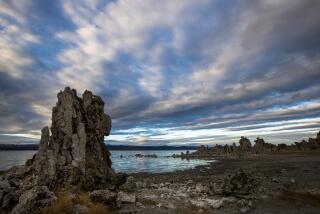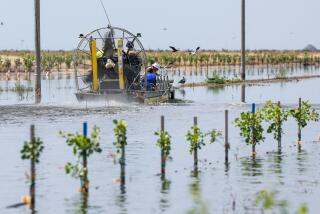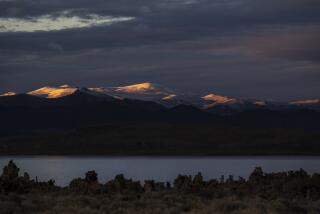Mono Lake brine shrimp
- Share via
[ ARTEMIA MONICA ]
Adult brine shrimp are scarcely larger than a quarter-inch fray of string, but they exert a tremendous influence on one of California’s most unusual lakes. Three times saltier and 80 times more alkaline than the ocean, Mono Lake is home to 7 trillion brine shrimp that are found nowhere else in the world. These semitransparent relatives of lobsters and sow bugs keep the lake free of algae as they swim around mating and sweeping microscopic particles into their mouths with long, frilled legs. Brine shrimp complete their life cycle and die as the lake’s waters cool in October. In the shrimps’ absence, algae proliferate so dramatically that the clear water turns into a murky pea soup color that lasts all winter long.
NATURAL HISTORY
Nearly 2 million eared grebes stop at Mono Lake each fall to fatten up on brine shrimp before continuing their migration to Mexico. Some grebes become so fat that they have to fast for a couple of days to fly.
KEY CHARACTERISTICS
Brine shrimp are various shades of pinkish red or pale turquoise. Eleven pairs of feathery appendages gracefully scull these animals through the water.
More to Read
Sign up for Essential California
The most important California stories and recommendations in your inbox every morning.
You may occasionally receive promotional content from the Los Angeles Times.










